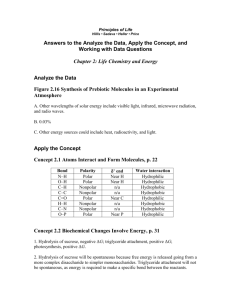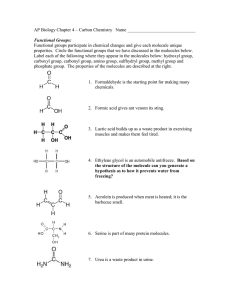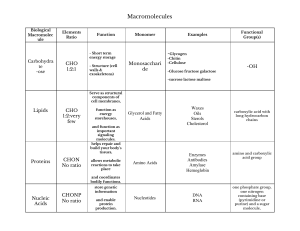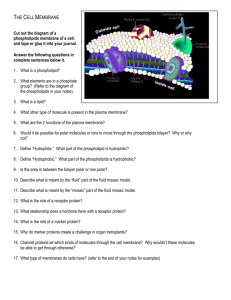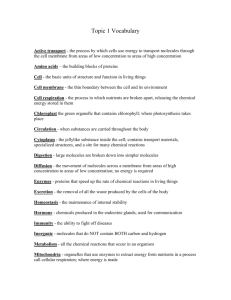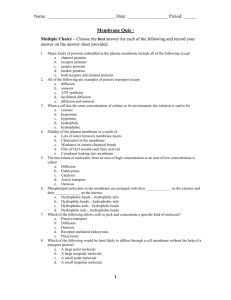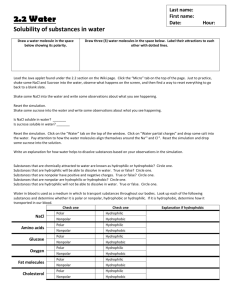Ch.3.1- 3.2 Membrane2014
advertisement
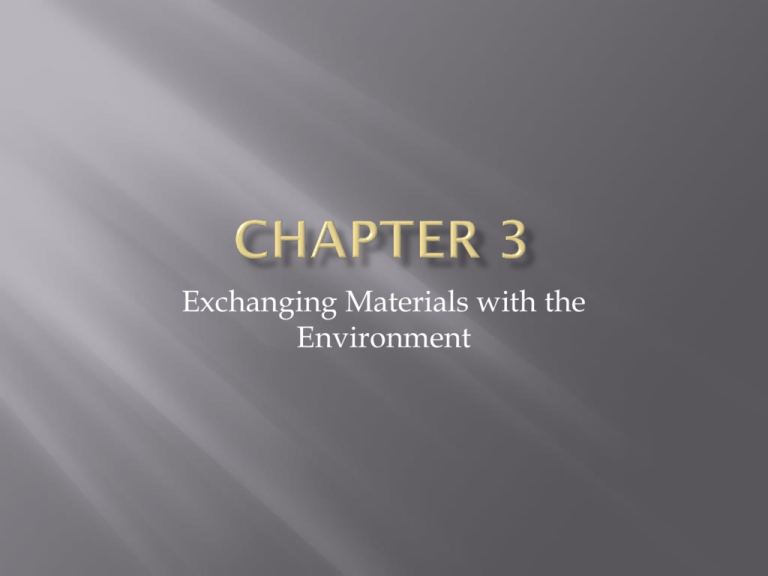
Exchanging Materials with the Environment Cells must be able to exchange materials with its environment The cell membrane controls what materials leave and enter the cell Selectively Permeable(Semi Permeable) Allows some things into the cell while keeping other things out “Gate keeper” Useful in maintaining homeostasis (a constant internal environment) What types of materials does the cell need? Water Oxygen Correct balance of ions Autotrophs need Carbon dioxide Nutrients (sugars and amino acids) Hormones What about materials leaving the cell? Cell waste like Ammonium ion (NH3+) Nitrogenous waste Carbon dioxide/ Oxygen (depending on cell type) Made of phospholipids that form a strong barrier around the cell. Phosphate group (Hydrophilic/polar) Fatty acid tails (Hydrophobic/ Nonpolar) Composed of 2 thin layers of phospholipids and proteins called a lipid bilayer Hydrophilic literally translates into “water loving” or “water friend”. Hydrophilic substances are attracted to or dissolve well in water. Bonds well with polar substances (like water) Hydrophobic is the opposite Hydrophobic substances are repelled by water (example: oils, nonpolar substances) The cell membrane is also composed of proteins known as transport proteins embedded throughout. These proteins are used as channels and pumps to help move materials across the cell membrane. Some proteins embedded in the membranes have sugars attached to them called: glycoproteins. Sugars can also be attached to the heads of membrane lipids called: glycolipids. Not all substances can enter and leave the cell membrane as they please. What factors determine a molecules permeability? 1) Size (large or small) 2) Polarity (polar or nonpolar) 3)Charge (ionic or covalent) Can Cross Small hydrophobic molecules like gases Small uncharged polar molecules like water Can’t Cross Larger uncharged polar molecules like amino acids, glucose and nucleotides Ions or charged molecules like H+ or OH-
